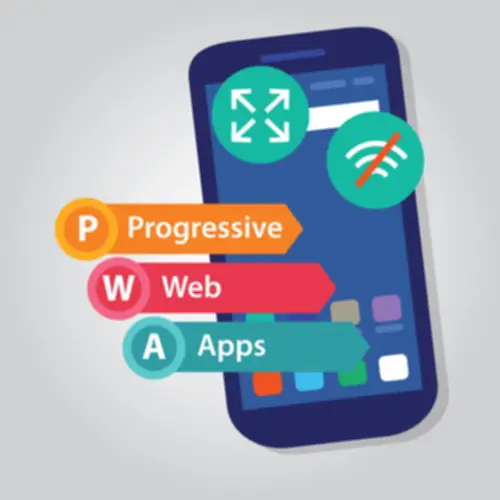Continuous integration is a vital side in environments with multiple developers. Each developer makes changes to code, and each change has potential issues. We’ve already seen that Jenkins helps constructing with Maven; it additionally works with Ant, Gradle, JUnit, Nexus, and Artifactory. Before Jenkins, the most effective https://spasatel-mchs.ru/htmlz/15-7-snyatie-i-ustanovka-kondensatora-sistemy-kondicionirovaniya-vozdukha.html a developer might do to keep away from breaking the nightly construct was to put in writing and test their code rigorously and efficiently on a neighborhood machine before committing it.

Be Taught More About Gitops And Ci/cd On Red Hat Developer
This is the reason we determined to construct a CI/CD pipeline for DevOps. And the open source model of Jenkins was the plain choice because of its flexibility, openness, powerful plugin-capabilities, and ease of use. In my article A newbie’s information to building DevOps pipelines with open supply tools, I shared a narrative about building a DevOps pipeline from scratch.
Steps To Install Jenkins (using war) On Windows 10

When it comes to a microservices architecture, Jenkins becomes essential. So when you incorporate Jenkins into your suite of development tools, you will find it easier to develop functions that leverage the microservices architecture. When used as a continuous integration device, Jenkins aids software program growth groups in shortly finding and fixing bugs in addition to automating the integration of new code as it is developed. With Jenkins being a server-based application, you want a web server, like Apache Tomcat, to make the application operable. By integrating a lot of testing and deployment applied sciences, Jenkins allows you to deliver your software program merchandise constantly.

Steps To Put In Jenkins (using Jenkins Installer) On Home Windows 10
Search for httpPort in the file and alter from 8080 to a preferred port of alternative (e.g. 9090 in our case). As we mentioned in step-2 above, you should have admin rights to perform this modification. In subsequent sections of the What is Jenkins blog, we might take a look at the steps for organising Jenkins Master and Agents. There is a strong involvement of the group which makes it a strong CI/CD tool. You can take support from the Jenkins neighborhood, whether or not it is for extensibility, assist, documentation, or some other feature associated to Jenkins.

Building Ci/cd Pipelines With Jenkins

As you’ll have the ability to see in the diagram offered above, on the left is the Remote supply code repository. The Jenkins server accesses the grasp surroundings on the left aspect and the grasp surroundings can push down to multiple other Jenkins Slave environments to distribute the workload. Jenkins lets you run a construct on a number of machines simultaneously to reduce the entire time it takes to run these processes. Jenkins can deploy the construct to an surroundings where user acceptance testing (UAT) can be done before it goes into production. In Jenkins, it’s easy to determine which commit was responsible for the build failing.
5 Configure The Default Port Of The Jenkins Construct Server
Jenkins is a CI device and a CI/CD software but it’s specifically a “continuous integration” device, not a “steady deployment/continuous supply” device. Docker containers are lightweight and portable, making them best for deploying sandbox environments for testing. Jenkins Docker is a plugin that allows Jenkins to interact with Docker.
The cause Jenkins software program became so in style is that of its monitoring of repeated tasks which arise during the improvement of a project. For example, in case your group is growing a project, Jenkins will constantly check your project builds and present you the errors in early levels of your growth. Jenkins CI provides numerous built-in steps that deal with frequent tasks, such as constructing, testing, and deploying code. Overriding these steps with custom implementations can lead to inconsistencies, errors, and increased upkeep effort. Familiarize your self with the built-in steps and plugins obtainable for Jenkins CI, and utilize them every time potential. This ensures that you are leveraging well-tested and community-supported solutions for common duties.
Learn how to create a Jenkins project and run the resulting build job. Jenkins runs as a stand-alone package or on a Java application server. The user interface is web-based and comes with a REST API in both instances.
- Before using Jenkins, a company would possibly need to manually launch its testing solutions – lengthening the QA process and making it substantially costlier.
- Currently, Jenkins is amongst the best CI/CD tools and is crucial for DevOps and agile teams.
- You can use both the net interface and the command line to load and unload plugins.
- It’s a free, open-source answer, and you’ll customize your Jenkins distribution to your wants.
What occurs if you do click a button depends on what the distant is constructed to control. Jenkins presents a way for different software APIs, software program libraries, construct instruments, etc. to plug into Jenkins, and it executes and automates the tasks. On its own, Jenkins doesn’t carry out any performance but gets increasingly powerful as different tools are plugged into it. You can create pipelines instantly within the person interface, or create a “Jenkinsfile” which represents a pipeline as code. Jenkinsfiles use a Groovy-compatible text-based format to define pipeline processes, and could be both declarative or scripted. A Jenkins project or task is an automated process created by a Jenkins person.
There are over a thousand plugins that you ought to use to extend Jenkins’ capabilities and make it more user-specific. This means that Jenkins may additionally be installed on any working system that runs on Java. Blue Ocean’s person interface strives to simplify the consumer’s journey by removing extraneous components and simplifying the menu structure. In addition, the fashionable visible design offers much-needed rest for builders, as displays adapt instantaneously to server adjustments making laborious page refreshes a factor of the previous. Not only that, but it additionally offers pipeline visualizations with an integrated failure detection operate. Based on my analysis and talks with engineers, I want to share tips about the method to use Jenkins proper.

The program runs web containers and plugins, corresponding to Apache Tomcat, and helps handle lifecycle and access rights requests. Over 1700 plugins for Jenkins enrich the software program integration, automation, and delivery processes and provide a customizable surroundings. The developer Kohsuke Kawaguchi, who worked at Sun systems, wished to create a way to carry out steady integration. The concept was to check the code earlier than committing to keep away from breaking builds.
The core expertise driving that initiative was Jenkins, an open supply software to build continuous integration and steady delivery (CI/CD) pipelines. A typical pipeline has a quantity of steps involving the building, testing, and deployment of purposes. With Jenkins Pipeline, you presumably can outline a number of steps in a simple method to help model varied, more complicated automation processes. The above-performed UAT tests are automated for steady delivery with a tool known as Selenium. The code is appended to the master branch to create a golden construct if the check is handed.
Jenkins has been around for years and has undergone numerous revisions, including features all alongside the means in which. One of probably the most transformative options added to Jenkins is the flexibility to run Jenkins Pipeline jobs driven by an automation script saved in a Jenkinsfile. Developers and launch engineers can use Jenkinsfiles to combine the practices of CI/CD and GitOps into a unified deployment process. One way is by directly writing a pipeline script on Jenkins, and the opposite method is by retrieving the Jenkins file from SCM (source management management). You would possibly want to modify your Jenkinsfile to enable it to run with the project. For instance, you’ll be able to modify the shcommand to let it run the identical command that would be run on a local machine.

Comments are closed